The Garden as a Sacred Blueprint for a More Beautiful World
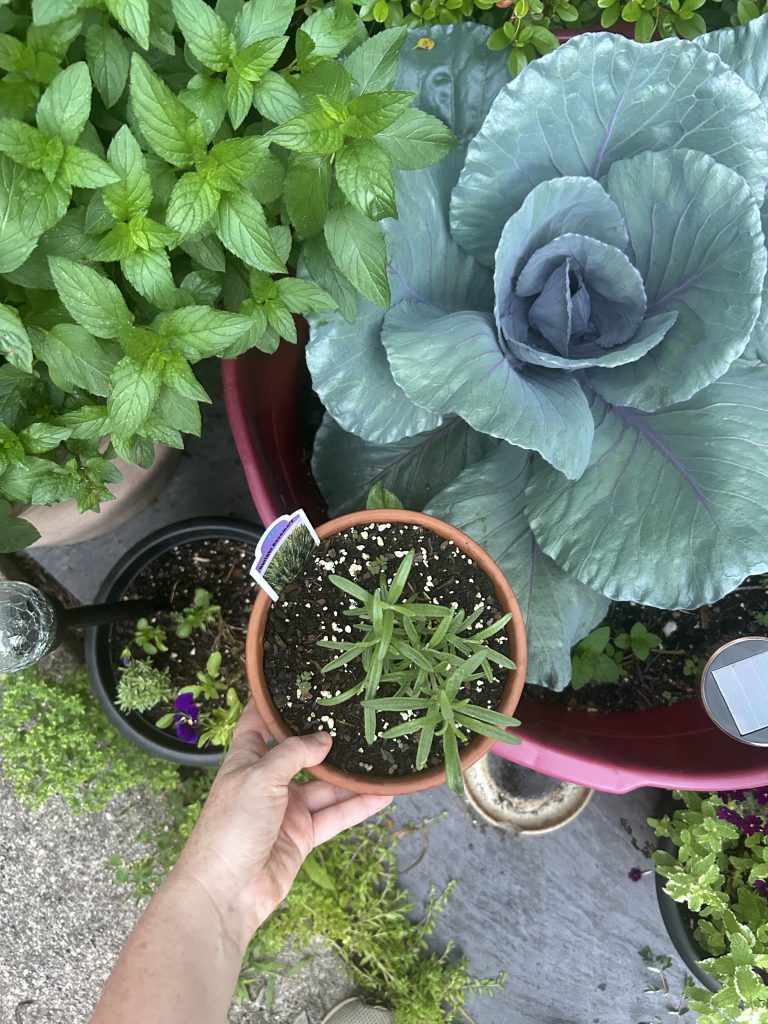
What Companion Planting Can Teach Us About Human Relationships
A Japanese samurai once said, “It is better to be a warrior in a garden than a gardener in a war.”
Plants, like people, don’t always get along. When we consider the world of growing food and flowers, an idyllic vision springs to mind—homesteading off the grid in a peaceful perfection. At last the material world’s problems fade. You are one with what some believe is God’s Creation—a return to the state of Eden. But the reality is much more complex in the midst of weeds, pests… and a spectrum of what are coined “companion” to “antagonistic” plants, which need proper spacing and distancing, much like imperfect human beings who may never be ready to unify.
It is better to be a warrior in the garden, prepped with knowledge of the realities of the pests that can plague it, on the surface, and the competition that can spark conflict between entangled roots, beneath the soil.

We are not separate from the natural world. In fact, I believe that humanity is akin to the food and flowers of one garden. Contrary to the shallow versions of diversity and unity being politically presented in the West, I trust in diversity being a strength in the natural world among both plants and people. Keep in mind too: According to the natural world’s laws, unity in diversity may require division. For a diverse perennial garden to bloom as a unifying landscape, its irises must be divided to ensure a reblooming the following year.
True unity requires discernment, patience, and boundaries. Pest control invites setting protecting limits, timing honors developmental differences, and diversity welcomes thriving together with different traits. Perspective, too, allows for a difference in views; for example, mint can be invasive in one setting, such as a limited garden bed, while beneficial in a space where it’s free to roam or a pot where it can spill out and spread its healing scent. Context matters. The art of allowing as well as the discipline of tending all matter within the microcosm of a garden and the macrocosm of a world aching for a rebirth.
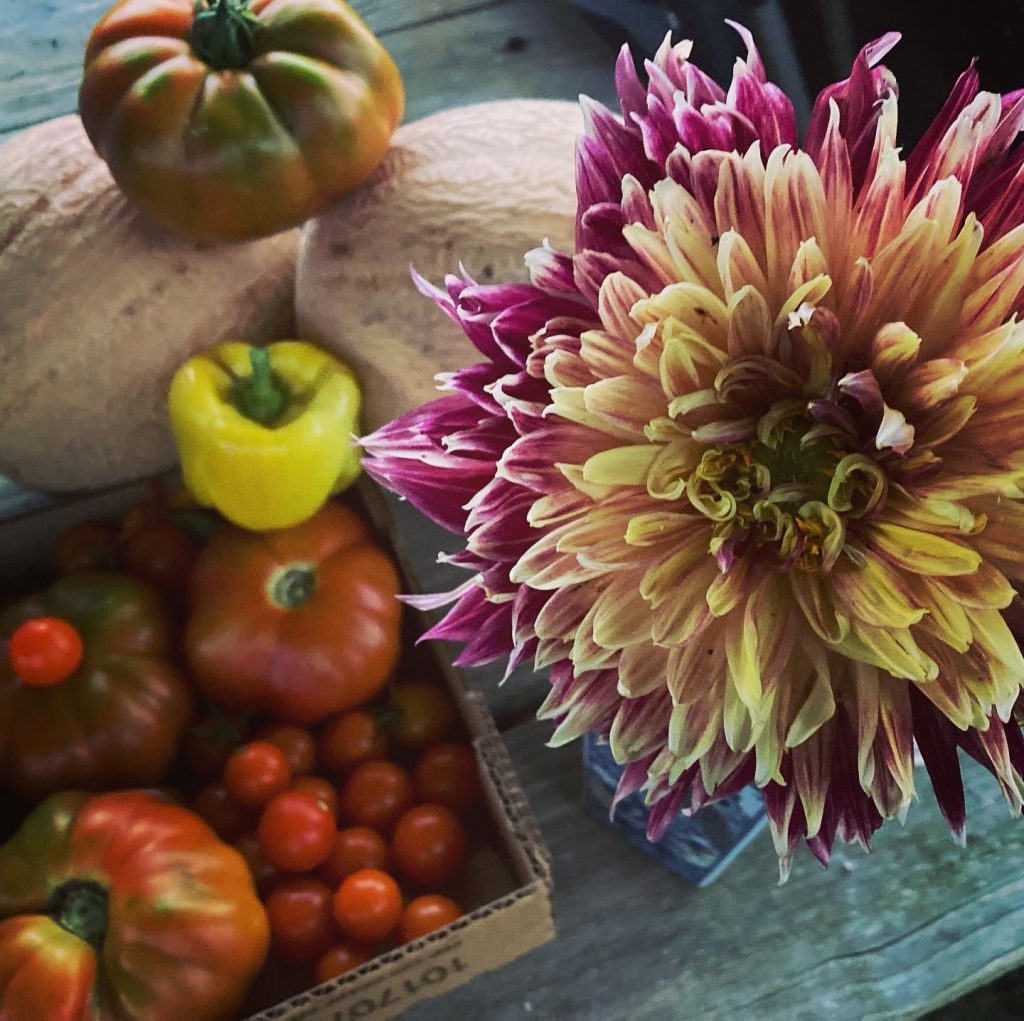
Agriculture being a unifying, transformative force, the garden is ripe with metaphor and method. The universal language that springs forth is a way to community across cultures, ages, and beliefs. Companioning and proper space lend relationship wisdom parallel with human relationships’ dance of balancing closeness and boundaries. Nasturtium seeds require filing and soaking, an example of a plant or person’s personality who opens up gradually, in its own time, while potatoes sprout in the peaceful dark and eager volunteer tomatoes embody different paces of readiness, or one might say, “awakening.”
At large, we are not separate from the unifying forces of nourishing integration nor the disintegrative forces at work. So rather than demonize the falling away of the old world and praise the integrating and cocreating of a new earth, there is wisdom in acknowledging that each phase has its place.
Only in the freedom of proper pruning (strategic letting-go to promote life), deadheading (removing the old to nurture the new), spacing (boundary setting), integrated care (proactive healing), and planting, in agricultural terms, “families” and “companions” can a garden, and by extension humanity, come together in a single ecosystem.
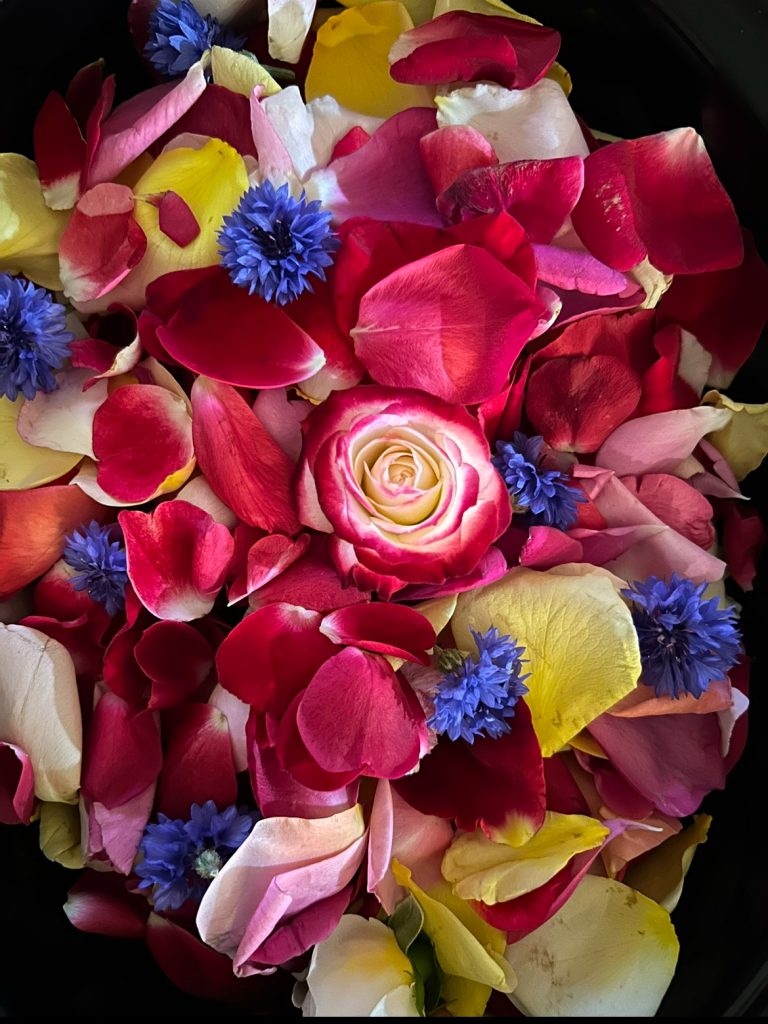
As the rose needs pruning in early spring, the bush flourishes in summer. As the petunia blooms, its neighboring flowers can fade. The gardener who has nourished life by planting can revere death in deadheading the wilting flowers and composting what no longer serves the garden’s grander purpose.
With regards to spacing, plants have personalities, too. Cabbages, which take up space, cannot be planted anywhere near sensitive strawberries. The former’s roots release substances into the soil that prevent delicate neighbors from growing, such as the delicate shallowed roots strawberry. They are, in agricultural terms, “antagonistic.” Considered more deeply, crunchy cabbages nor sweet strawberries are wrong for their respective personalities; they produce differently, contributing uniquely to the cocreative mission of the garden, suiting the different tastes among the humans that savor their bounty.
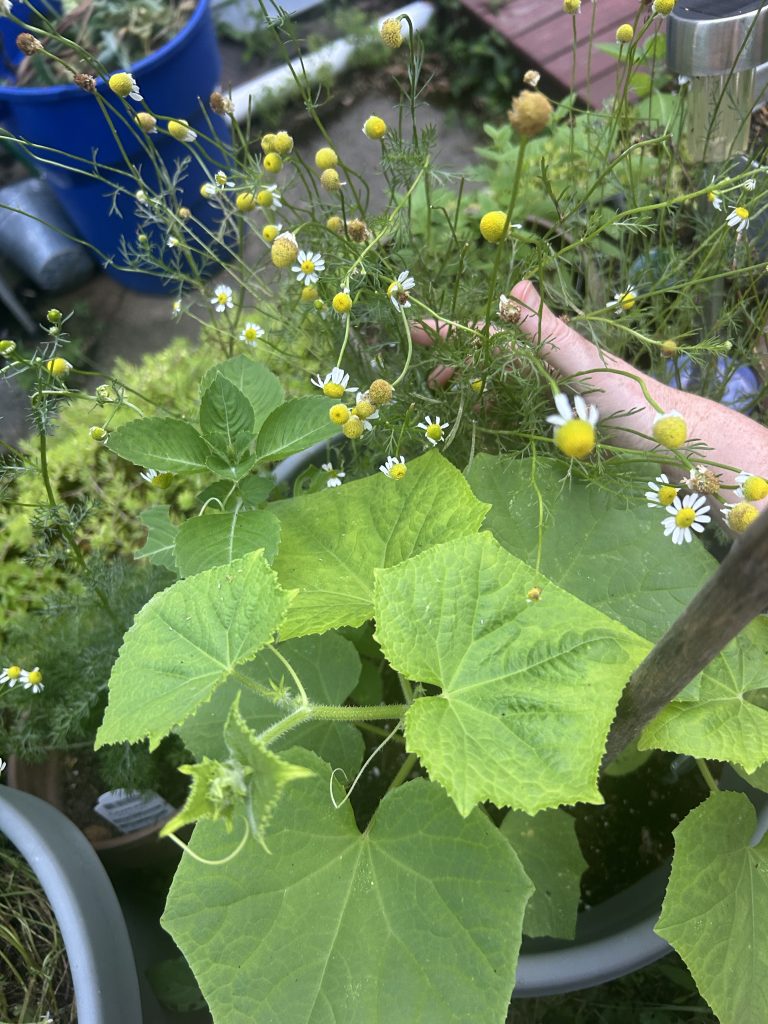
Though not all plant (or people) relationships have to be competitive. Chamomile and cucumbers make for fantastic companions. Creating mutual beneficiality, the former deters aphids from the latter by attracting beneficial insects like ladybugs and hoverflies to prey on these pests, while also enhancing the flavor of its neighbor, as the cucumbers offer their herbal friend shade from the hot summer sun. Likewise, a crunchy cucumber of a person’s flavor can be nourished by a sensitive soul.
Preventative care can also be used to nourish, akin to certain styles of medicinal healing. For example, inserting neem oil with a syringe into adolescent stems of cucumber plants to keep pests at bay not only benefits the plants, but also the persons reaping the subsequent harvest and the neighbors who may receive the abundance as well—steps to creating connective community.
We have a choice: to lean into community, implementing the aforementioned wisdom or go rogue as individuals. Creating community among plants or people is both natural and endlessly complicated. Building a workable community is like preparing soil: making it fertile despite the rocks and pests beneath our feet.
No perfect world, however small, such as the microcosm of a family of cucumber vines, exists. When we focus on the dangers of resistance without vision, we are left frantically pulling weeds instead of stopping to smell the roses. And there may be little to no harvest at the end of your intended growing season.
Dwelling on broken systems without inventing alternatives can lead to stagnation. What you focus on grows. Let us recommit to cocreating a more beautiful world — beauty through sacred sovereign stewardship, choosing cultivation over critique. Let us diffuse a fragrance, as roses do to attract pollinators, to draw community through authenticity. As warriors in a garden, let us be fed by peace, honored by healthy space, infused with joyful interdependence and personal agency intertwined with stewardship, and nourished by a rhythm of caring companionship.
(Speech given at the Porcupine Freedom Festival, Lancaster, NH, June 2025)
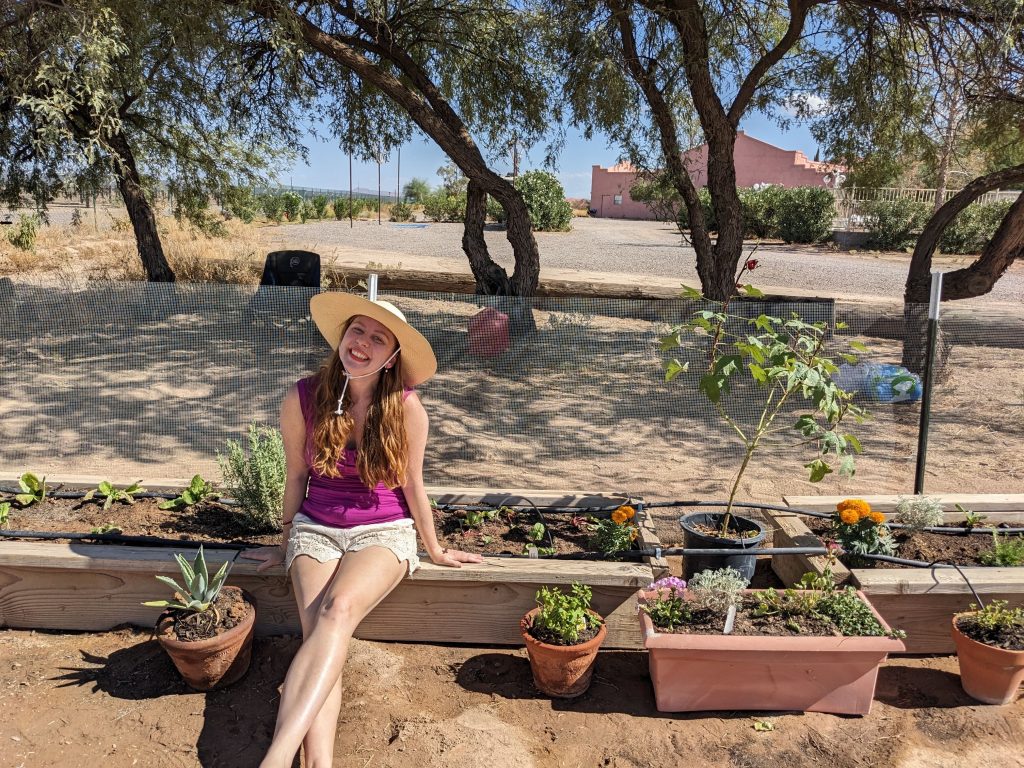
About Sienna
Sienna Mae Heath | The Sovereign Gardener
Gardening Consultant | Companion Gardener | Tea Vendor | Writer | Artist
Cocreating a more beautiful world, Sienna Mae Heath—The Sovereign Gardener—is a gardening consultant, companion gardener, local tea vendor, writer, and artist. Her work is rooted in the belief that unity in diversity is more than a platitude—it’s a way of life. People and plants alike invite us to practice companionship, cultivating a new world grown from the grassroots.
She teaches “God’s Gardens: Cocreating Friendships Among Plants & People,” a program for youth and families that embraces the metaphor of humanity as the food and flowers of one garden—growing together through seasons of integration and disintegration.
Sienna invites you to grow in community by sharing your insights, gardening updates, and questions.
🌿 Reach out to her for:
- Gardening advice
- Writing services
- Herbal Teas & Bees (handcrafted teas and clay magnets)
- Lesson plans for youth and families
- An herbal tea growing guide
- Collaborative creative projects
- PoeTEA and AstroloTEA parties
📬 Connect on Instagram or Facebook: @thesovereigngardener
📧 Email: sienna.m.heath@gmail.com
Resources
🎧 Listen to her “Food is Freedom” interview series on Free the People, where she explores agriculture, food as medicine, and natural remedies.
📝 Read her budding series on The Advocates about the sacred freedom of growing food and flowers.
📥 Sign up to receive her free guide: “The Secret to Growing 3 Superfoods in Your Window” here.

No responses yet